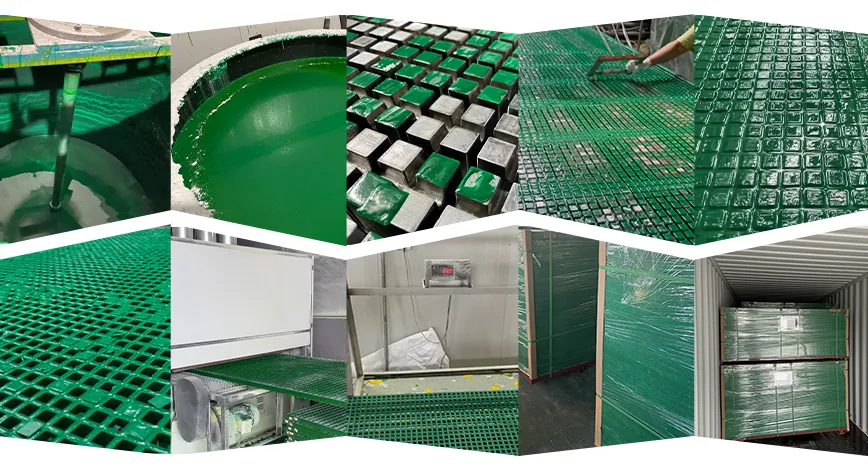loading...
- No. 9, Xingyuan South Street, Dongwaihuan Road, Zaoqiang County, Hengshui, Hebei, China
- admin@zjcomposites.com
- +86 15097380338
- Welcome to visit our website!
grp handrail systems
Enhancing Safety and Aesthetics The Importance of GRP Handrail Systems
In today’s fast-paced world, safety and aesthetics in architectural design have become paramount. One often overlooked yet integral component of safety design is the handrail system. Among the various materials available for creating handrails, Glass Reinforced Plastic (GRP) has emerged as a popular choice. GRP handrail systems offer a combination of durability, safety, and versatility that can enhance both the functionality and appearance of any structure.
Understanding GRP
Glass Reinforced Plastic, often referred to as fiberglass, is a composite material that consists of a polymer resin reinforced with glass fibers. This unique combination gives GRP several advantageous properties, making it suitable for various applications, particularly in environments where safety and resilience are necessary.
One of the most significant benefits of GRP is its lightweight nature. Compared to traditional materials like steel or wood, GRP is much lighter, leading to easier handling and installation. This can significantly reduce labor costs and time during construction while maintaining structural integrity.
Durability and Maintenance
GRP handrail systems excel in harsh environmental conditions. Unlike metal handrails that may corrode or rust over time, GRP is resistant to moisture, chemicals, and UV radiation. This durability makes GRP an ideal choice for both indoor and outdoor applications. Whether installed in industrial settings, swimming pools, or coastal areas, GRP handrails can withstand the test of time and the elements.
Furthermore, GRP requires minimal maintenance. Unlike traditional wood handrails, which may need frequent staining or sealing, GRP handrails retain their structural and aesthetic properties without intensive upkeep. A simple wash with soap and water is often sufficient to keep them looking new, making them a practical choice for busy facilities where maintenance downtime needs to be minimized.
Safety Features
grp handrail systems

Safety is the foremost consideration when it comes to handrail design. GRP handrails are manufactured to meet rigorous safety standards, ensuring they are compliant with regulations in various sectors. These handrails can be designed with anti-slip surfaces, which are critical in preventing accidents, especially in wet or slippery environments. The use of GRP also allows for the addition of highly visible colors or reflective elements, enhancing visibility and safety, particularly in low-light conditions.
Aesthetic Versatility
While safety and durability are crucial, aesthetics should not be overlooked. GRP handrail systems can be designed in a variety of styles, colors, and finishes, allowing designers to create custom solutions that complement the architectural themes of any project. Whether aiming for a sleek modern look or a more traditional design, GRP can be molded and finished to meet specific aesthetic requirements.
Moreover, the ability to incorporate additional features such as lighting or integrated signage within GRP handrails can further enhance both safety and the visual appeal of a space. This versatility makes GRP an appealing choice for architects and designers looking to push the boundaries of traditional handrail design.
Applications of GRP Handrail Systems
The applications of GRP handrail systems are vast and varied. In industrial settings, they are often used in warehouses, factories, and chemical plants, where safety is critical, and exposure to harsh chemicals is a concern. GRP is also finding its place in residential buildings, public transport systems, and commercial spaces such as shopping malls and hotels.
In marine environments, GRP handrail systems are particularly beneficial due to their resistance to saltwater and humidity. This makes them an excellent choice for promenades, docks, and other coastal structures. Additionally, with growing concerns about sustainability and environmental impact, the long lifespan and maintenance-free nature of GRP contribute to eco-friendly building practices.
Conclusion
In conclusion, GRP handrail systems present a robust solution for safety and aesthetic needs in various applications. Their lightweight yet durable properties, along with low maintenance requirements and aesthetic versatility, make them a superior choice compared to traditional materials. As safety regulations continue to tighten and the demand for innovative designs rises, GRP handrails are poised to become even more prominent in architectural and industrial applications. Investing in GRP handrail systems not only enhances the safety of a location but also contributes to its overall aesthetic value, making it a wise choice for any project.
-
The Rise of FRP Profiles: Strong, Lightweight, and Built to LastNewsJul.14,2025
-
SMC Panel Tanks: A Modern Water Storage Solution for All EnvironmentsNewsJul.14,2025
-
GRP Grating: A Modern Solution for Safe and Durable Access SystemsNewsJul.14,2025
-
Galvanized Steel Water Tanks: Durable, Reliable, and Ready for UseNewsJul.14,2025
-
FRP Mini Mesh Grating: The Safer, Smarter Flooring SolutionNewsJul.14,2025
-
Exploring FRP Vessels: Durable Solutions for Modern Fluid HandlingNewsJul.14,2025
-
GRP Structures: The Future of Lightweight, High-Performance EngineeringNewsJun.20,2025
